Post-training survey question categories
- Content quality feedback
- Design and structure feedback
- Instructor feedback
- Outcome feedback
- Logistics feedback
- Learning experience feedback
- Learning environment feedback
- Technology feedback
- Professional development goals feedback
- Pre-training experience feedback
Successful organizations know that learning and development are part of a continuous process — not one-and-done activities. Providing employees with the training they need to do their jobs well and learn new skills is essential for retaining top talent and meeting organizational goals. In fact, according to a 2021 survey, 80 percent of employees said that growth and training opportunities were important in their decision about accepting a job.
Making training opportunities available is a big step in the right direction; however, you also need to ensure that the training you provide is effective and useful. After all, if employees don’t learn anything new or don’t retain their new knowledge, it could end up being a waste of time and resources. Collecting employee feedback after a training session is a good way to find out whether the training met participants’ expectations and what you can do next time to improve the offering.
In this article, we dig into everything you need to know about post-training surveying, including the benefits of collecting feedback, tips for creating an effective post-training survey, different question formats you can use, and examples of post-training survey questions you can ask. We’ll also explain how you can use Jotform to create and manage post-training surveys when you’re ready to get started.
The benefits of collecting post-training feedback
Collecting post-training feedback helps you evaluate what worked and what didn’t work about a training and allows you to improve future offerings.
When you ask your employees questions about their training, you can get clear insight into whether it provided them with the knowledge they needed to do their jobs more effectively. If it didn’t, the next step is to figure out what knowledge gaps exist and address them with future training sessions.
In addition, collecting post-training feedback gives employees a voice when it comes to their professional development. It’s a chance for them to express their thoughts and opinions on the training. They can let employers know whether something was missing or whether the information was repetitive.
Employees can also offer feedback on logistical issues, such as the day or time of the training and whether it interfered with their work or other commitments. Giving employees a chance to provide feedback increases their engagement and also gets them involved in designing their ideal learning opportunities.
Tips for creating a post-training survey
Surveying takes time and effort on everyone’s part. Follow these strategies to ensure you get the information you’re looking for.
- Determine your goal. Identify what you want to learn from your feedback survey. For example, are you looking for employee viewpoints on the course structure and design? Do you want to know their opinions about the content? Are you interested in their thoughts about the training’s level of difficulty?
- Time it carefully. You should provide employees with the post-training survey very soon after the training so it’s still fresh in their minds. If you wait too long, employees may not recall certain information and won’t be able to provide accurate feedback.
- Keep it short. After completing their training, employees may not be willing to fill out a long, intensive survey. Keep your feedback survey concise, and only ask questions related to your specific goal for the survey. For example, if you’re looking for feedback on content quality, don’t ask questions about logistics.
- Vary question formats. Use a combination of open-ended and closed-ended question formats so that the survey doesn’t feel monotonous. Open-ended question formats provide more detail, while closed-ended question formats are good for gathering general insights and spotting trends. (More on this below.)
- Send reminders. People get busy and it’s easy for a survey to get buried in employees’ inboxes. Send reminder emails so folks don’t forget about the survey, or set up automatic reminders with a survey platform like Jotform.
- Test it out. Ask a small group of employees to complete the post-training survey first, and then revise the survey based on the types of responses you receive if it’s not gathering the kind of data you need.
Now let’s look at different question formats that can help you gather different types of data.
Create a post-training survey preloaded with these 25 questions.
Question formats
An effective survey includes a variety of question formats to gather different types of information. Here are some common question formats you can use in a post-training survey:
- Short answer: These open-ended questions require the respondent to answer with a few words or a couple of short sentences. This format is great for collecting qualitative information.
- Yes/no: This type of closed-ended question enables organizations to collect quantitative data. You can also combine a yes/no question with a short answer question by providing a field where the respondent can write a short explanation about their answer.
- Multiple-choice: This type of closed-ended question is a great way to gather quantitative data and assess broad sentiments by finding which of a predefined selection of options most respondents pick.
- Rating or Likert scale: This question type requires respondents to assign a value on a scale as their answer. Typically, the value indicates the preferences or attitudes of the respondent. The values can be numerical (for example, “Rate your satisfaction on a scale from 1–10”) or verbal (for example, “Rate your satisfaction on a scale from ‘very low’ to ‘very high’).
Now that you have an idea of the different types of question formats you can use, let’s dig into the topics you might want to ask about in a post-training survey and some example questions.
Post-training survey questions you can use
Content quality feedback
These post-training survey questions can help you determine whether the material presented in the training met the objectives of the learning session.
- Was the training content relevant to your role in the organization?
- Question type: yes/no or short answer
- Purpose: determine whether the training material was a good match for employees’ needs
- How would you rate the difficulty level of the training material?
- Question type: rating scale
- Purpose: determine if the material was too complex or dense
- Do you feel you have a full understanding of the training material?
- Question type: yes/no or short answer
- Purpose: determine if the training material was clear and organized
- Are there any aspects of the content that you think need improvement?
- Question type: short answer
- Purpose: find ways you can improve future training material
- Do you feel there are any gaps in your knowledge after the training session?
- Question type: yes/no or short answer
- Purpose: find out if the material was comprehensive or if there were oversights
Design and structure feedback
The format of the training can affect whether employees were engaged and whether they understood the material.
- Do you think the course delivered the content in the right order?
- Question type: yes/no or short answer
- Purpose: determine if the learning material was presented logically
- Did the training format make sense to you?
- Question type: yes/no or short answer
- Purpose: determine if the delivery method was effective or if it impeded learning
- Were there enough video and audio learning aids in this training course?
- Question type: yes/no or short answer
- Purpose: determine if future trainings should have additional learning supports
- If you could change one thing about the design of this course, what would it be?
- Question type: short answer
- Purpose: keep your course design flexible so you can meet employee needs
- Was the course layout logical?
- Question type: yes/no or short answer
- Purpose: determine if the current structure of the course works well
Instructor feedback
A great teacher can make monotonous material engaging, but the opposite is also true. Instructors play an essential role in the success of a training session.
- Was the instructor engaging and interesting?
- Question type: yes/no or short answer
- Purpose: determine the effectiveness of the instructor
- How would you rate your teacher’s level of expertise?
- Question type: rating scale
- Purpose: determine the instructor’s level of knowledge on the subject matter
- Was your instructor able to answer any questions you had about the material?
- Question type: yes/no or short answer
- Purpose: determine if the instructor provided the necessary support for learners
- Did you feel comfortable discussing the material with the teacher?
- Question type: yes/no or short answer
- Purpose: determine if the instructor was approachable
- Did you feel you needed additional instruction after the session was over?
- Question type: yes/no or short answer
- Purpose: determine if the instructor covered all the necessary material effectively
Outcome feedback
Outcome-based questions can help you determine whether the training session achieved your goals and genuinely helped employees.
- Did the training session meet your expectations?
- Question type: yes/no or short answer
- Purpose: determine if you communicated the purpose of the training effectively beforehand
- Do you feel the training will help you excel at your role?
- Question type: yes/no or short answer
- Purpose: determine if the training was relevant for employees
- What was the most useful aspect of this training session?
- Question type: short answer or multiple-choice
- Purpose: understand what components of the training were most valuable to employees
- What was the least useful aspect of this training session?
- Question type: short answer or multiple-choice
- Purpose: understand what components of the training were least valuable to employees
- Would you consider participating in another training session on a different topic?
- Question type: yes/no or short answer
- Purpose: determine whether employees found the training worth their time
Logistics feedback
Even if an instructor effectively organizes and delivers the course, the logistical aspects of the training need to align with employees’ other work and life commitments. Here are some logistics post-training survey questions to help you gauge how effectively you scheduled the training:
- Was this training session held on a day and time that was convenient for you?
- Did you have enough notice before taking this mandatory training session?
- If you could change the date or time or this training session, what would you change it to?
- Was this training location convenient and accessible for you?
- Did someone cover your responsibilities at work while you were in the training session?
Useful course material and a good teacher are essential, but logistics are also important. Training location, format, and timing need to align with employees’ other work and life commitments.
- Was this training session held on a day and time that was convenient for you?
- Question type: yes/no or short answer
- Purpose: determine if you need to do more to ensure the timing of a future training is convenient for employees
- Did you have enough advance notice before this training session?
- Question type: yes/no or short answer
- Purpose: determine if you need to provide more advance notice
- How did you feel about the length of the training session?
- Question type: Likert scale
- Purpose: find out if the training length worked for employees
- Was this training location convenient and accessible for you?
- Question type: yes/no or short answer
- Purpose: determine if location changes need to be made in the future
- Did you have enough time to both attend the training and fulfill your work responsibilities?
- Question type: yes/no or short answer
- Purpose: determine if employees had enough bandwidth to attend the training
Learning experience feedback
Understanding how employees felt about the overall learning experience can help you evaluate your investment in the training, recognize what was valuable about it, and find areas for improvement for future trainings.
- What did you like most about the training?
- Question type: multiple-choice or short answer
- Purpose: determine the most positive aspects of the training
- What did you like least about the training?
- Question type: multiple-choice or short answer
- Purpose: determine which aspects of the training can be improved
- Did anything about your training experience surprise you?
- Question type: short answer
- Purpose: determine if employee expectations and course material were misaligned
- Would you recommend this training session to a colleague?
- Question type: yes/no or short answer
- Purpose: see whether employees found real value in the training
- Would you consider this training experience worthwhile?
- Question type: yes/no or short answer
- Purpose: gauge overall employee opinion about the training
Learning environment feedback
The learning environment is crucial to people’s ability to absorb information and pay attention.
- Did you feel distracted during the training session?
- Question type: yes/no or short answer
- Purpose: see how conducive the learning environment was to attention
- Did you feel comfortable speaking up during the training session?
- Question type: yes/no or short answer
- Purpose: determine if the learning environment was welcoming
- What are your thoughts on the format of the training?
- Question type: short answer
- Purpose: determine what employees thought of the overall learning environment and training medium
- What are your thoughts on the number of employees in the training session?
- Question type: short answer
- Purpose: determine if there were too many or too few other learners in the course
- How could we have improved the learning environment?
- Question type: short answer
- Purpose: gather ideas for improvements you can make to reduce distractions and encourage learning
Technology feedback
Many professional trainings and classes today are virtual — online courses, mobile apps, intuitive learning management systems, videos and graphics, and other digital materials are often used. Consider whether you’re delivering employee training via the right technology.
- Do you prefer in-person or virtual training?
- Question type: multiple-choice or short answer
- Purpose: find out if employees prefer a virtual or in-person learning format
- Was the learning platform easy to use?
- Question type: Likert scale or short answer
- Purpose: find out if employees had any issues using the platform
- Did the training technology work as expected?
- Question type: yes/no or short answer
- Purpose: see if technical difficulties hampered the training
- Did you have all of the devices you needed to participate in the training?
- Question type: yes/no or short answer
- Purpose: find out if you need to provide new equipment to employees
- Do you have any suggestions for improving the training format?
- Question type: short answer
- Purpose: see if employees have ideas for other technology platforms or solutions
Professional development goals feedback
While your organization has specific goals for employee training, keep in mind that employees will have their own goals for their development as well. Helping employees meet their career growth goals can help with employee retention and loyalty.
- Did this training contribute to your personal professional development plan?
- Question type: yes/no or short answer
- Purpose: determine if employees’ personal goals align with the organization’s training goals
- What training subjects would you like the organization to focus on?
- Question type: short answer
- Purpose: learn what kind of future trainings employees would value
- If you had a choice, would you have taken this training session?
- Question type: yes/no or short answer
- Purpose: determine whether employees would prioritize this learning opportunity if it were up to them
- Did this course influence your professional development goals?
- Question type: yes/no or short answer
- Purpose: find out if the training affected employees’ view of their career development
- Would you have taken this training somewhere else as part of your professional development if it hadn’t been offered at work?
- Question type: yes/no
- Purpose: gauge the relevance of the topic to employees
Pre-training experience feedback
Do your employees understand why leadership arranged the training in the first place? Communicating the organization’s intentions and goals is helpful for getting employee buy-in and enthusiasm.
- Did the organization explain the purpose of this training before you took the course?
- Question type: yes/no or short answer
- Purpose: see how well you communicated about the training
- Did the organization give you enough time for the training?
- Question type: yes/no or short answer
- Purpose: see if employees felt they had time to engage with the course or if they felt overloaded between the training and their existing workloads
- Did the training align with the course description?
- Question type: yes/no or short answer
- Purpose: determine if the course description is accurate or if it misrepresents the material
- Is there anything you wish you had been informed about before taking the training?
- Question type: short answer
- Purpose: see if you could have better prepared employees for the training
- How did you find out about the training?
- Question type: multiple-choice or short answer
- Purpose: find out if employees were informed in a clear and timely way about the training
Create post-training surveys and more with Jotform
Creating a post-training survey for your employees is simple when you have the right tools. Jotform is a powerful online form builder that’s flexible and easy to use, allowing you to quickly design and share surveys and analyze results.
Jotform features over 10,000 form templates, with 2,000-plus survey templates and hundreds of feedback form templates, including training evaluation forms, training feedback forms, and coaching session feedback forms. Use our drag-and-drop Form Builder to customize the text, add or remove new questions, drag and drop questions to reorder them, modify the design, and more.
You can also easily create new surveys from scratch. Choose from a multitude of question types, including rating scales, star ratings, open-ended questions, multiple-choice, and many more.
Jotform doesn’t just make creating post-training surveys easier — it can also help you review and analyze the responses. Jotform Tables is an automated database that you can use to manage and organize survey data, while Jotform Report Builder automatically generates customizable and shareable survey response reports.
No matter which post-training survey questions you’re asking, you can gather the insights you need from them with Jotform.
Photo by erica steeves on Unsplash


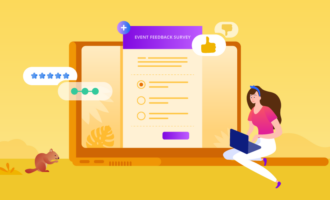


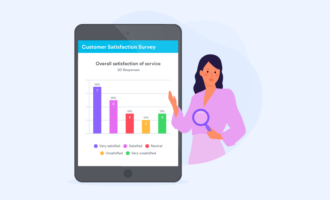

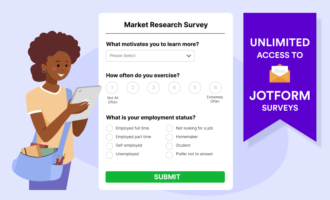




















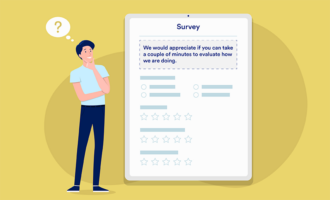
























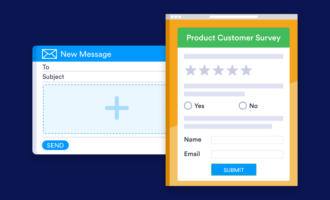





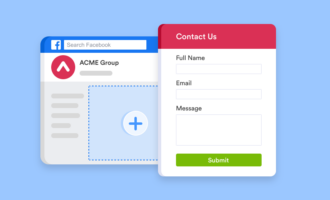




























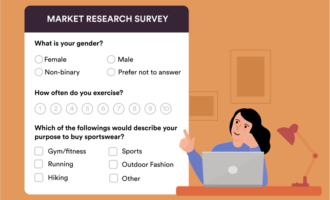





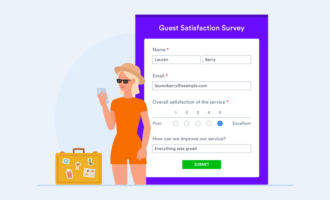







Send Comment: